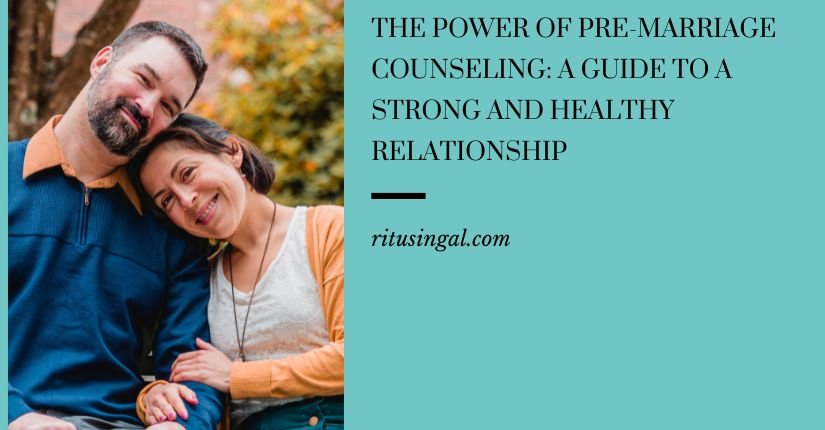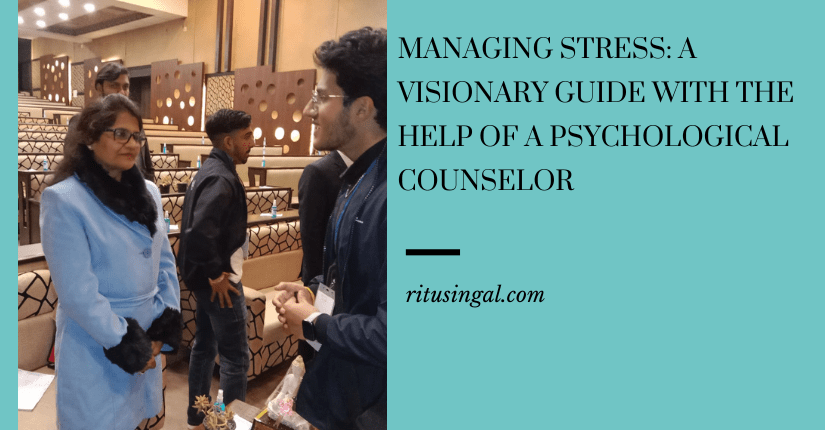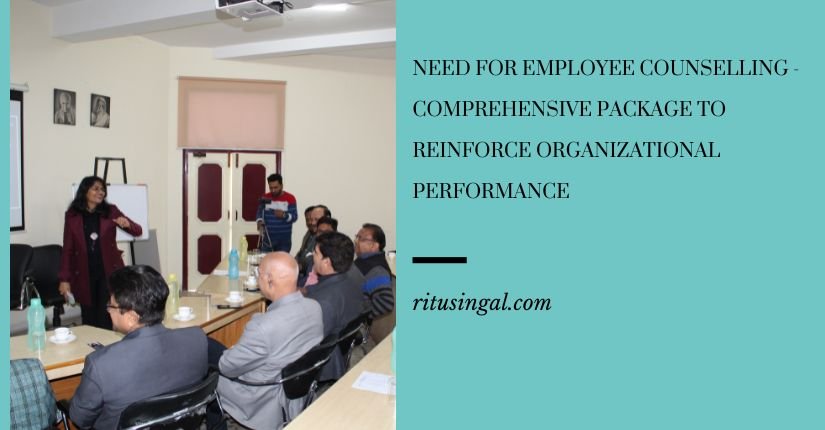“All happy families are alike but each unhappy family is unhappy in its own way.” – Leo Tolstoy
However, it looks like he was not exactly alright as there are many common issues that families face. Our family situation may appear to be unique, but the fact is, millions of families around the world confront similar, if not identical, problems. While these problems may look overwhelming, with knowledge, patience, dedication and a willingness to evolve solutions, all such problems can be worked through.
Family problems come in myriad shapes, impact the entire family dynamics and shape our family relationships. All families deal with relationship problems at times. But the ways the family members cope with these issues provides a framework for family dynamics and sets the tone for family life.
How to Solve Family Problems- Some General Do’s
The idea of family may be on the downhill in many societies globally. But it has stood the test of time for millennia despite the many ills plaguing it. We know family is our life, that’s all we crave for whenever in trouble or need of support. Our family laughs and cries with us and is ever ready to support us in need.
Of course, no way does it mean that families are just perfect and don’t have problems. There are some common threads in a majority of family problems, which warrant resolution for a happy family life.
Try to
- Foster an environment of sharing
- Accept that there is a problem
- Get down to the basic issue, forget about its outer manifestations and symptoms
- Save your relationships, forget anger, ego and individual pride
- Get some professional help, if you are unable to work it through on your own
- Take good care of yourself
Forging a family culture of openness, trust, communication and security and a willingness to resolve family issues, can go a long way in improving relationships and maintaining positive family dynamics.
How to Solve Family Problems – Some Common Features
Families face many problems – large and small and include arguments, miscommunication, and misunderstandings. They may also involve addictions, financial problems, mental illness, grief, illnesses and divorce. Sometimes, such issues exist between only two family members, while others can involve the entire family. Issues like grief over the demise of a loved one are there for all to see, other problems may be more subtle – a child not coming out openly or a wife, who is an unhappy married woman.
Frequently, family issues are rooted in underlying causes, which may not look apparent but their impact may spread throughout the family. Such conflicts are especially potent in a child’s life, who carry them over into adult lives and future family relationships.
Environment of Sharing
The issue of how to solve family problems needs to be addressed with basic understanding that families are built on relationships, which are strengthened with healthy communication. An environment of sharing is the foundation for healthy communication. The family members should feel safe in order to share their feelings and their problems. From a parental viewpoint, it means letting your child share their viewpoint without the fear of judgment or punishment. A child also needs to feel certain that they will be taken seriously. Such a child can talk comfortably about difficult/emotional issue like mental health, identity, anxiety, or substance abuse. They are more likely to open up while struggling with a situation or making a difficult decision. This is equally true of other family relationships, too, between siblings and between a couple.
An environment of sharing can be fostered by:
- Listening
Experts on marriage and family counseling list it at the top while talking of the Dos for a strong family bond. Listen to the other one before reacting. Ask if your advice is welcome and if it is not, let it go and follow up later.
Share your own feelings as sometimes, things may not be obvious to others. Sharing your feelings without blaming can bring up new viewpoints and perspectives.
While sharing your perspective, present it as your perspective and not the facts.
Recognize others’ experiences. Telling others how they should feel discourages sharing.
Be human
Admit your mistakes and make others comfortable while admitting their own mistakes.
Be the Change
We are all influenced by people. Try to be the change you want to see in others by modelling healthy ways of expressing emotions.
Do it together
Marriage and family counseling experts believe that the families that spend time together develop a closeness that encourages open communication and sharing. Try to explore interests, sports or other family activities. Activities that involve going out are very fulfilling and stimulate future conversations and closer relationships. Sharing sets the stage for solving and preventing family problems.
Acknowledge the Problem
Sometimes family problems arise from a lack of closeness while some problems involve something serious like abuse. Whatever be the case, acknowledging that there is a problem is the first step in fixing it. Ignoring such issues and pretending as if everything were fine are unhealthy coping mechanisms.
The lack of such acknowledgment can exacerbate the existing issues, trigger negative situations, and culminate in damaging behavior like lashing out, aggressive arguments, substance abuse, or violence. Acknowledging a problem enables positive action to fix the situation, and may avert unhealthy coping mechanisms that can create negative situations.
Many times, people avoid discussing these problems as such efforts in the past had only worsened the things. Therefore, they begin to believe in avoiding rather than fighting, which causes other side effects. In any case, feeling stuck is a sign that a third party is needed to resolve the problem.
Get down to the Deeper Issue
Once a problem has been acknowledged, we can try to identify its roots. The truth is, most family problems are just outwards symptoms of a deep-rooted problem, knowing which can paves the way for greater empathy among family members e.g.
Substance abuse
Users of alcohol or other substances often use it as a mechanism to escape from a difficult emotional situation like grief over the loss of a loved one, financial instability, marital conflict, divorce, the pain of illness or other problems. Seeking help from a therapist can help break down the deeper issues that cause substance abuse and help them on the path to recovery.
Stress, anxiety among children
Often, anxiety is triggered by an event and the stress that stems from it causes further anxiety, thereby making a cyclical pattern. The anxiety could be rooted in a social issue at school, concern for a friend, feeling overwhelmed in school or struggling with a learning disorder. Children perceive much more and could be reacting to a parent’s passing comment like “We are running on a tight budget these days.” Talking to the child and maintaining trust with open communication encourages them to reveal the source of their anxiety.
Sometimes, bringing out the issue in the open is the only thing needed to resolve a problem. This important step helps develop a plan to resolve issues and encourage understanding within family relationships.
Focus on the Relationship – Leave behind anger and pride
Anger and pride feed negative emotions, hamper empathy, thwart open communication, damaging to individual mental health and are opposed to healthy family relationships. Holding on to them blocks the path to conflict resolution. They fuel stress, anxiety, and depression. However, letting go of these emotions can be difficult and painful. The fear of pain, vulnerability, or failure keeps a person from improving their family relationships.
Prioritize the goal of a happier relationship over being hurt or the fear of failure. Where a family problem exists, someone has already been hurt, which makes the fear of being hurt again even greater. But the potential for healing is real. Focusing on this potential, and letting go of negative emotions opens the door to communication, healing and better mental health.
Get Professional Help
Remember, therapy is for everyone; it isn’t reserved for the mentally sick or weak or those with emotional disorders. As humans, we need other humans to work through problems with us and therapy provides a safe environment for it with the support of a trained professional.
Therapists have special expertise gained through professional training. They help you talk about your family issues and develop strategies to resolve difficult situations. Therapy is safe and there is no risk of being judged or medicated.
Regarding the choice of a professional, it’s often good to seek a referral from a friend or family member or your family doctor.
Take Care of Yourself
Taking care of yourself and keeping good mental health is essential while solving family issues. Always keep in mind – positive family dynamics starts with a healthy self. Being healthy allows you to let go of negative emotions, which paves the way for safe and open family communication and helps the family focus on relationships.
Common Family Problems
- Conflicts
Disagreements and conflicts are part of family dynamics, which is especially true of egalitarian marriages and families wherein everyone is free to express opinions. These differences can easily escalate to arguments and conflicts, which potentially damage the family relationships and peace, if left unresolved.
Arguments, per se, are not bad; they tend to promote independent thinking and reasoning, but the trouble arises when they slip out of hands. Do argue by all means but lay down certain rules and do not let your emotions overpower you as you may hurt others unintentionally.
Solution:
- Define the problem clearly and avoid generalizing the issue. For instance, if your spouse didn’t pick a glass lying on the bed today, do not say “You’ll never do that”. You know there has only been one such instance.
- Argue over the specific issue and do not bring out other past grouses, which is going to do no good.
- Focus on the solution instead of endlessly stretching the argument. If your spouse never presses the toothpaste tube from the bottom, it’s no fun arguing. Get two toothpastes, instead. Simple!
- Focus on the why behind others’ behavior and if the disagreement is turning into a fight, have a time-out. Return to the topic whenever are back to normal.
- Communication
Most arguments are caused by inadequate/ poor communication. Everyone needs the chance to explain themselves. Making assumptions regarding anyone is just not done. In order to strengthen family relationships, open communication deserves to be given great priority.
A big casualty of a disagreement/fight is the closure of communication channels, which worsens it. So keep the lines of communication open. To do so, set aside your ego as it takes a big heart to be the first person to tackle a problem. Try to reach out first, however hard it is.
* In case it doesn’t work out, an older family member can intervene mediate in a meeting.
* Ignoring the problem will worsen it, leading to coldness. It’s better to express yourself at a suitable time. Raising a family problem at festival time isn’t a good idea.
* Avoid drinking before a tough family conversation as it can fuel emotions, which will hamper your thinking and block your conversation.
* Many kids/teenagers hesitate to express for the fear of ridicule/ shame. Explain to the family that each one is welcome to express themselves openly.
- Work-Life Balance
The lack of a healthy work-life balance creates another common family conflict. Amidst both parents’ jobs/ businesses, ensuring a work-life balance can be tricky. But it is relatively easier to resolve as the balance is easily achieved with smart planning and slick execution. The key is creating clear boundaries between work and life so that the two don’t overlap to create conflicts.
Spend time on yourself. With a better work-life balance, you’ll have a better focus and give due attention to work and family.
Solution: The best solution is – leave work at work and focus on family when off work. Delegate your tasks to avoid being overworked.
- Infidelity
Infidelity or cheating is being emotionally/physically unfaithful to a spouse and breaking a commitment/promise in the act. Around 1/4th of all marriages face infidelity, one of the biggest threats to marriages and families. Prevention is the best pre-emotive solution i.e. the partners commit to and nurture their relationship.
Unfortunately, an extra-marital affair offers no painless solution as to rebuild the broken trust, one needs time and a commitment to change.
Solution: Working through the emotions of shock, anger and grief takes time and effort as it’s important to give yourself space for all your feelings. Be assertive rather than being aggressive as anger causes rash decisions. Practice mindfulness and self-regulation to calm yourself and think rationally.
The cheating spouse must take full responsibility and need to be transparent and answer the other one’s questions. It can lead to an understanding of what went wrong and what needs to change. Though trust doesn’t return overnight, accepting responsibility can be a good start.
However, if things don’t work out, total separation is the only way out. It is a bitter pill that needs to be swallowed in cases where marital recovery is otherwise impossible.
- Money Matters
Finances are big time stressors in a relationship, especially in times of financial stress. Arguments about money are common and important issues and need to be addressed on priority. The most important cause is a disagreement over the way people think about money management. If one spouse is a firm believer in penny-pinching while the other one a spendthrift, you can expect fireworks only. Therefore, sit down and discuss calmly how you will deal with income, expenditure, savings, insurance and investment. The spouses need basic financial literacy to understand and profit from money management and set out the priorities of how it is to be consumed.
Solution: Create a monthly budget. In case of financial difficulties, cut back on unnecessary expenses and look for additional sources of income. Financial troubles can test a relationship hard and but with openness and sincerity, you can navigate tough times together.
- Distance
Physical/emotional distance can extract a heavy toll and crate strain, especially if you have kids. Physical distance may be a compulsion due to one’s occupation. If you cannot do anything about the physical distance, think of nightly video chats, online games or watching movies online together.
For those looking to strengthen family relationships, it is import mat to understand that much more dangerous is the emotional distance despite physical proximity. It arises from a serious issue like mistrust or lack of communication, which leads to a lot less sharing.
Solution: Talk it out honestly and transparently. Listen to each other’s perspectives and try to find a common ground. Try to accommodate the other person’s needs to save your relationship.
- Disagreements over parenting styles
Every parent has a different viewpoint about raising children, which is affected by their own upbringing. One cannot undo the past but if you disagree on parenting, talk it out. Discuss and try to understand their views on your parenting style.
Solution: If two spouses disagree over parenting styles, they need to make compromises and adjustments. However, if one parent’s style is toxic for the child, you need to convince them of its toxicity and make them come round to your viewpoint.
- Rebellious Children
Rebellious children test your patience and push you to limits. You certainly can teach them the consequences of their actions by setting a positive example of how you react to your emotions. If you are dealing with an angry teenager, listen to their grievances and discuss and offer them advice only if they ask for it. A child can learn many good things by making mistakes.
Unravelling the knots
Family problems are painful. However, there are ways to prevent them in the initial stages to restore peace. Life is too short to waste time on cultivating negativity towards your loved ones.
- Begin the discussion
- Go to the root
- Address the problem
Beginning the Discussion
- Wait until you’re calm enough to discuss it. While arguing, wait until everyone is calm to keep it from becoming a full-blown feud.
* While you’re upset /emotional, wait awhile, the emotion will subside somewhat and you’ll approach the issue logically.
* Approaching someone while you are angry heightens an already tough situation. Wait till tomorrow.
- Deal in person
* Sending an email is the worst possible choice; it’s open to misinterpretation as there is no body language here, which conveys empathy and reduces pain.
* Pick up the phone or, better, meet in person.
- Admit faults
* Understand that family members have faults, but you can still love them.
* Accept your faults. Look at family issues not as all-or-nothing where someone is wrong and someone else right. Instead, perceive the gray areas.
* Apologize even if you did nothing wrong.
* Avoid the blame game and use positive language. Stay away from negative language.
* Avoiding judgmental words or name calling. Blaming others makes them defensive and counter attack you.
* Don’t try to “win” the argument. Try to see two or more ways to see the point.
* Maintain a calm, modulated tone. Explain calmly and methodically with empathy for others. Cool down the argument with, “I can see your point.”
- Forgive
* Forgive those who have wronged you, though difficult.
* Forgiveness frees you from the corrosive fight. It’s about letting go of the past so that you build a healthier future.
* All humans are imperfect and need forgiveness.
Getting to the roots
- Problem identification
Identify the problem by figuring out what’s going on. Perhaps one is facing health problems or personal problems. Consider the real issue so that you can address it better.
* Don’t assume, find out what they think. Focus on causes, not symptoms.
- Ask
* Dig out the root cause by asking questions rather than making statements.
* Asking questions softens the conversation and draws out the truth.
* Ask open-ended questions to provoke them to elaborate and listen to them.
- Recognize when to discuss
* A family conflict clearly indicates relationship problems. Some problems are caused by differences of opinion such as on cultural values. Other problems can be substance abuse, mental sickness, bullying, mistrust, finances, stress, sex and jealousy.
Addressing the problem
* Compromising implies that you evolve a mutually acceptable solution to defuse/address a problem.
* The first step is figuring out whether the problem is solvable.
* Don’t talk to a family member when you’re distracted, on a project, or phone calls or the like.
Prevention is the best cure
A sharing environment is the foundation of healthy communication. Family members need to feel safe while sharing feelings and discussing issues. A child must feel safe to share their viewpoint without any fear of judgment/punishment. Children who feel safe easily open up while struggling with a situation or making a difficult decision. This is also true of other family relationships.
Family counsellors recommend the following:
- Listen
- Be willing to share your feelings.
- When sharing your perspective, present your perspective and not the facts.
- Recognize others’ experiences as valid.
- Admit your mistakes, encouraging others to admit theirs.
- Create a personal example of the behavior you want to see in others.
- Try to do things together – interests, sports, activities – to achieve a sense of closeness, open communication and sharing.
However, if everything fails, it’s best to seek professional help.









































































































